
Paul Leni’s 1927 film version of John Willard’s 1922 stage play The Cat and the Canary is not the first of the “Old Dark House” films (nor was the play the first theatrical incarnation of the sub-genre). It is, however, the best, the most important, the most defining and the most influential. While it was predated by several films—most notably Roland West’s 1926 version of The Bat—the imported German filmmaker brought a strong Expressionist quality to bear on the film, and he employed a much more mobile camera, making the film feel more modern. (Actually, any camera movement at all would have made it more mobile than West’s nailed-down, American silent-film technique of the era.) He also created a much more sinister atmosphere that is never dispelled by the sometimes overbearing comedy of hero Creighton Hale and some of the supporting characters. Despite being typical of its time in that it boasts a wholly rational explanation for the events that take place over the course of the evening in the old mansion of Cyrus West, the atmosphere is not so easily dismissed. (The film is so indelibly impressed on the genre that there are traces of it seen as recently as 2007 in James Wan’s Dead Silence.) The long corridor with its billowing curtains, the secret passages, the hand coming out of the bookcase door, Lawyer Crosby’s (Tully Marshall) body falling into the room, the escaped homicidal maniac—these are all things that, once seen, you never quite forget. The set-up—relatives gathering 20 years after the death of Cyrus West for the reading of his will—is a genre staple. (The play itself would be filmed three more times.) It’s the sort of creepy movie that is perhaps best thought of as spooky fun—and 85 years have not changed that.
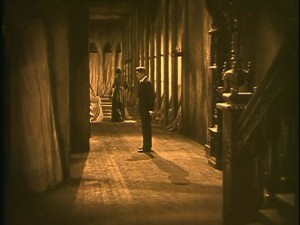
What is most remarkable about the film from a cinematic standpoint is how groundbreaking it is in terms of technique. The year that The Cat and the Canary was released—1927—was a landmark one for American film. That it was mostly the result of two German filmmakers—Paul Leni and F.W. Murnau—is perhaps ironic, though it should be noted that the first of the big stylistic breakthrough pictures, 7th Heaven, by the American Frank Borzage. That said, it was Borzage after he’d met Murnau and the two men had become friends who fed off each other’s ideas at Fox. Murnau clearly influence Borzage, since Borzage’s style had been typical of the nailed-down camera approach of the American silent film. (In fairness, Borzage had more than a little impact on Murnau, so it’s a two way street.) 7th Heaven hit first, followed by The Cat and the Canary, and capped off with Murnau’s Sunrise.
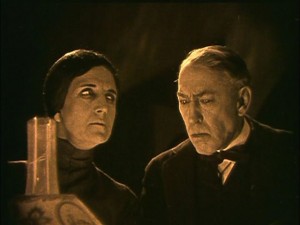
The impact of these films on American cinema is impossible to overstate. Compare, for example, Josef von Sternberg’s straightforward Hollywood filmmaking technique in his Underworld (1927) with that of his The Last Command—the year after these films hit movie screens. The influence is obvious and immediate. Of the three, The Cat and the Canary gets the least appreciation for the simple reason that it’s a genre work and therefore considered less important. That’s poppycock, balderdash, and just plain stupid. It isn’t of any great thematic import—and I’m hard-pressed to find anything that’s superior to Sunrise—buy stylistically, the film’s a lulu.
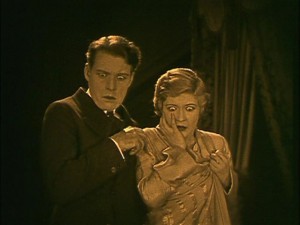
Some of the things that Leni does with his camera seem shockingly modern even today. At one point, he even briefly uses a hand-held tracking shot that could be called the first instance of the “shakycam” approach (though he doesn’t beat it to death). For that matter, he even uses animated intertitles a la those of Murnau in Sunrise—and Leni’s film was in theaters two months earlier. The low-angle shots, distortion effects, and fast tracking shots are still startling. Unfortunately, Leni only made three more films—one of which is lost. A few months after completing his rarely seen “haunted theater” film, The Last Warning (1929), Leni died of blood poisoning at the age of 44.
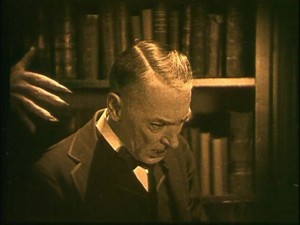
The film is a fairly faithful rendering of the play—with, of course, greater scope in terms of the creepy setting. I suppose you can say that the play has been opened-up, but mostly this is within the confines of the house. One of the stranger aspects of the film is that it retains the name Mammy Pleasant (Martha Mattox), but makes her white and drops all references to her being a “voodoo woman” from the West Indies. Otherwise, the film mostly just drops the bulk of the dialogue about the various histories of the characters and their relationships prior to meeting up for the midnight will reading. The gist of the whole thing is one of those wills that one hopes exist mostly in theater and movies. This one’s a double dose of bad ideas. Old Cyrus’ estate goes to Annabelle West (Laura La Plante)—as long as she’s judged as being of sound mind. If a doctor (who turns out to be Lucien Littlefield doing a Dr. Caligari impression) decides she’s insane, the whole thing goes to an alternate heir, whose name is in a separate envelope. Of course, it turns out that the envelope has been opened, but before Crosby can tell Annabelle…well, he gets what anybody in a mystery gets upon uttering the words, “The name is…”
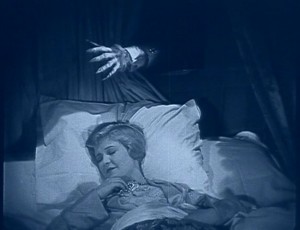
Naturally, it’s assumed that Annabelle is crazy, because poor Lawyer Crosby has disappeared into a secret passage behind the bookcase. Her case isn’t helped when she later claims that a claw-like hand came through the wall and stole the priceless West necklace off her neck while she was sleeping. Things look a little brighter for her, though, when she happens to push the right panel and Crosby’s corpse tumbles into the room. None of this, however, gets us any closer to the identity of the killer—or just what became of the escaped maniac who’s wandering about the grounds. That’s what makes up the crux of the film’s latter part and provides the exciting climax.
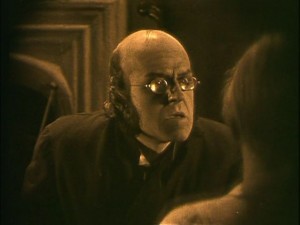
Being from 1927, The Cat and the Canary, though silent, did have a set score, which in the version being screened has been recreated (presumably from the cue sheets). It’s rather typical of the period, being a blend of some classical music (mostly Schubert’s “Unfinished” Symphony), more popular fare, and a few actual pieces of movie music that may or may not have been written for this film. Savvy viewers will recognize what would become the opening credit music for Little Caesar (1930), Gaston Borch’s Incidental Symphonies (probably best remembered from the 1932 Bela Lugosi film White Zombie), several chunks of the Bogeyland music from Victor Herbert’s Babes in Toyland, and the 1919 Irving Berlin song, “You’d Be Surprised” (aptly, but overused, as a theme for our unprepossesing hero). This was a common approach at the time—a little clunky, but generally effective, and a good approximation of what the film sounded like in 1927 showings.
The Thursday Horror Picture Show will screen The Cat and the Canary on Thursday, March 29, at 8 p.m. in the Cinema Lounge of The Carolina Asheville, and will be hosted by Xpress movie critics Ken Hanke and Justin Souther.



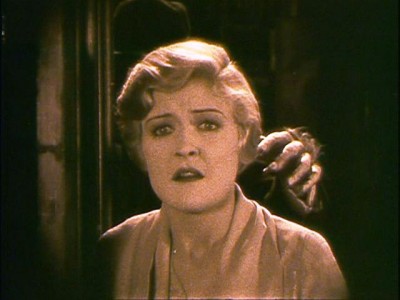
Before you comment
The comments section is here to provide a platform for civil dialogue on the issues we face together as a local community. Xpress is committed to offering this platform for all voices, but when the tone of the discussion gets nasty or strays off topic, we believe many people choose not to participate. Xpress editors are determined to moderate comments to ensure a constructive interchange is maintained. All comments judged not to be in keeping with the spirit of civil discourse will be removed and repeat violators will be banned. See here for our terms of service. Thank you for being part of this effort to promote respectful discussion.